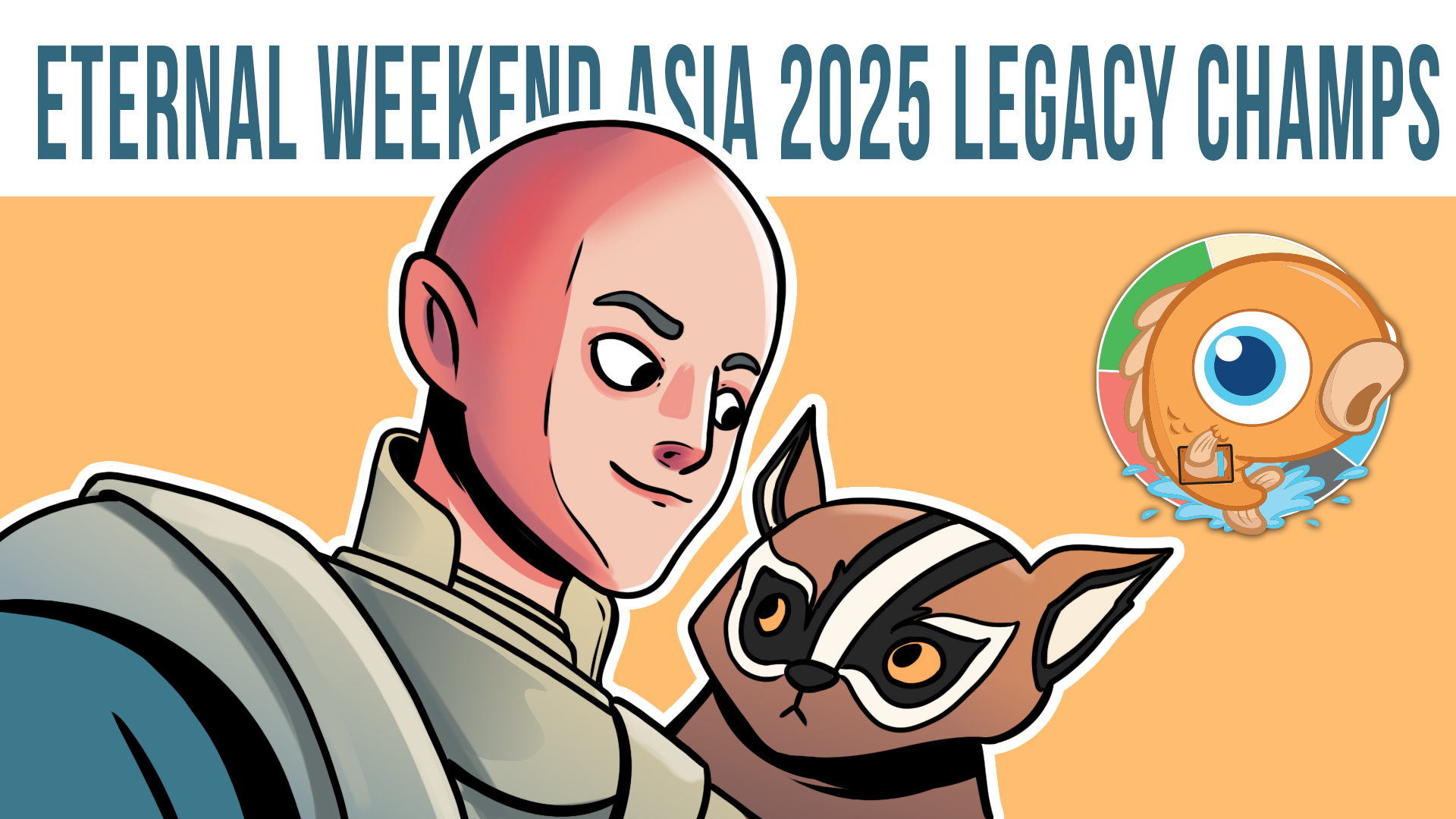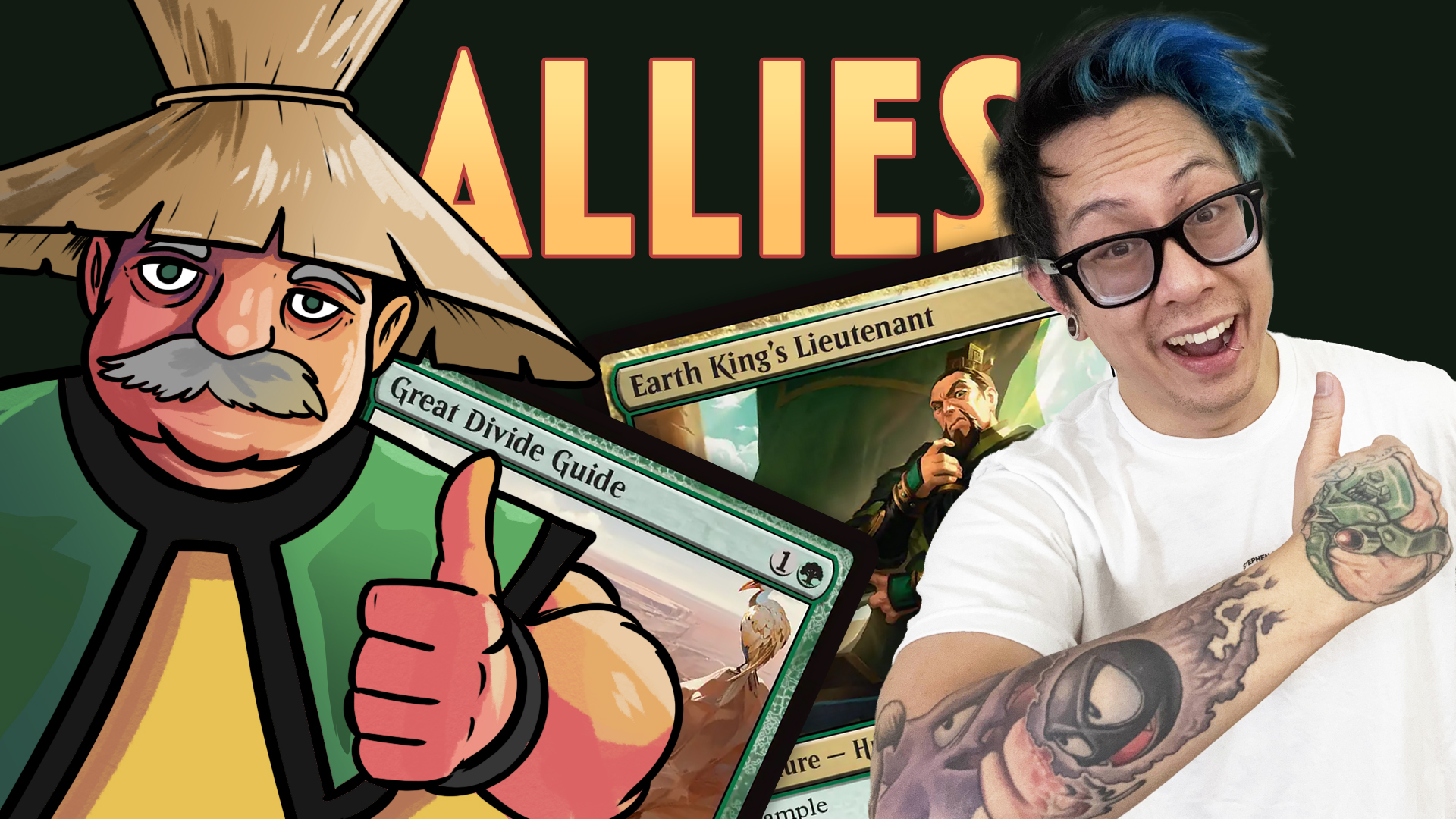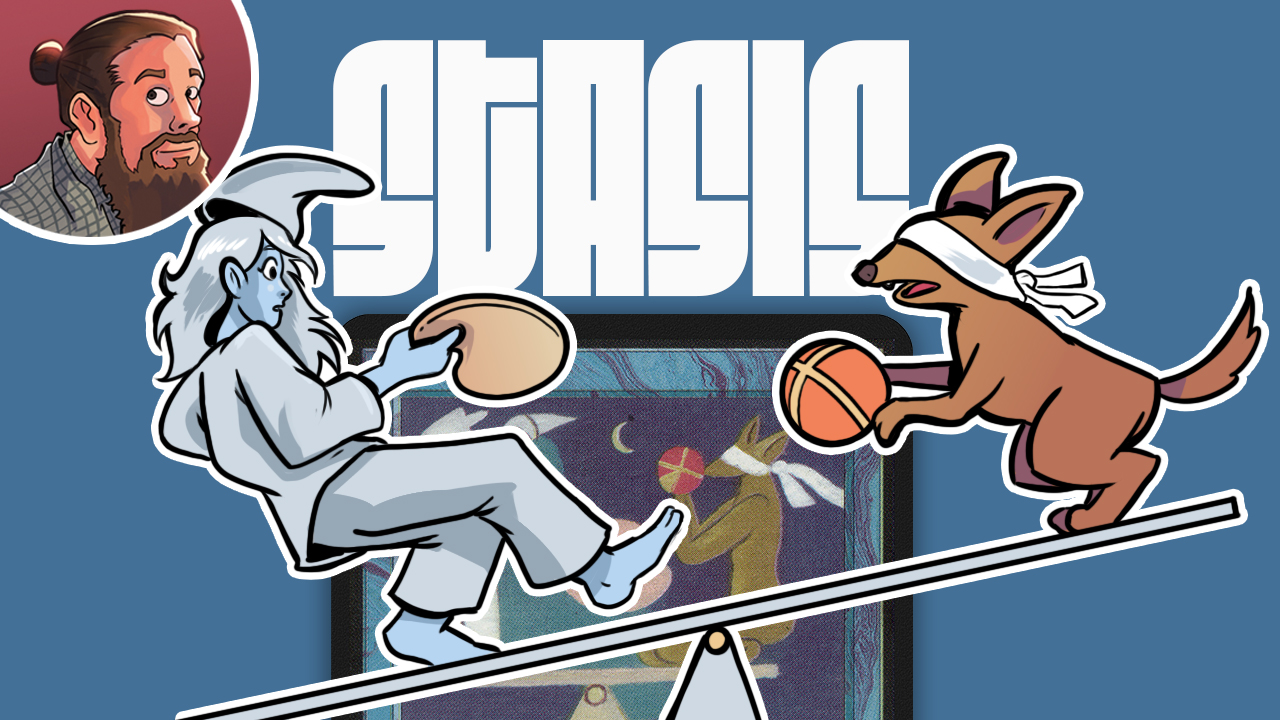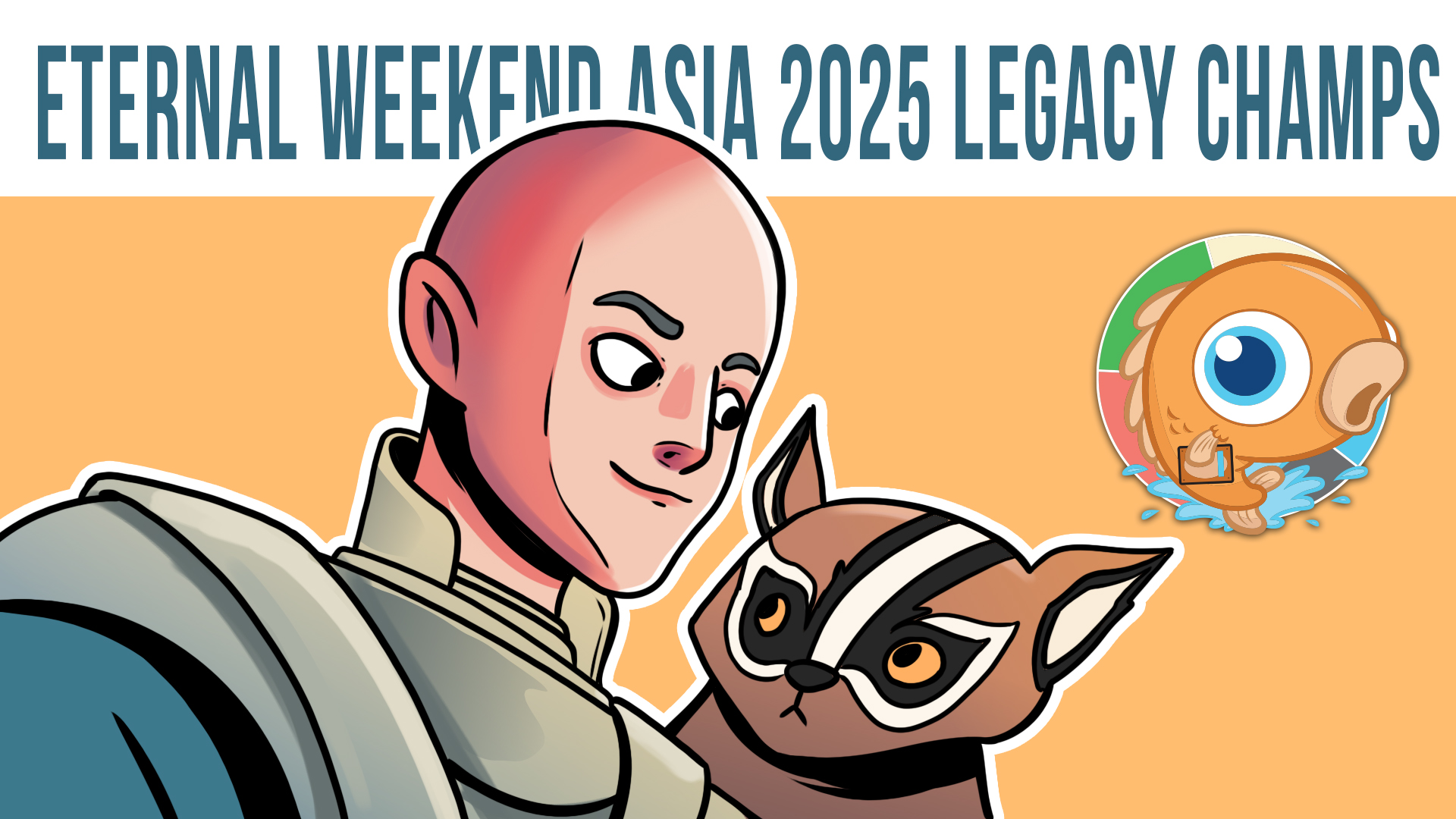By the Numbers: Battle for Zendikar Week One
While the release of any set is exciting, set releases that come along with rotation are especially interesting. With non-rotation set releases, it usually takes a little while for most of the new cards to find homes, but at rotation, many of the decks that have been the default for the past year either no longer exist, or (at the very least) are greatly changed, which often allows new cards to take center stage immediately. This weekend marked not only the official release of Battle for Zendikar, but also the first major tournament featuring the new Standard format. Despite the perception that Battle for Zendikar is a relatively underpowered set, there is no arguing that its impact on Standard is immense.
The Standard shakeup isn't limited to just Battle for Zendikar cards. Some cards from Khans block and Magic Origins get better thanks to Battle for Zendikar additions and Theros block subtractions from the format. Other cards from these older sets get worse, either because their most natural homes have rotated, or because they are overshadowed by new cards. As such, it's probably worth taking a few minutes to discuss the big happenings of the weekend with the help of the top decks at StarCityGames Indianapolis.
The Day Two Metagame
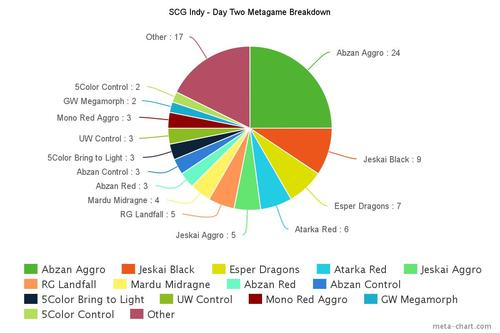
Unsurprisingly, the week one metagame appears to be wide-open with 31 different archetypes among the 98 players to make day two as SCG Indianapolis. Old favorites that didn't lose too much at rotation including Abzan Aggro, Jeskai Aggro and Esper Dragons make up a large portion of the field, but new designs and new twists on last season's decks are a plenty. Right away the massive impact of Battle for Zendikar becomes apparent; thanks to the combination of Battle for Zendikar duals and Khan of Tarkir fetchlands, you can literally play any color combinations you want from mono-colored (like Mono Red Aggro) to four- and five-color decks like Jeskai Black and Five-Color Control. Do you want to play Kolaghan's Command and Crackling Doom in your Jeskai deck? No problem. Splash for Radiant Flames in Abzan? Sure! Grind your opponent out with eight Siege Rhino with the help of Bring to Light? Why not?
Considering that this is the very first weekend of Battle for Zendikar and the first major tournament featuring the new cards from the set, it seems likely that we are only scratching the surface of what is possible in a Standard with manabases almost on par with Modern. However, it is clear that at least for this weekend, the more colors the better.
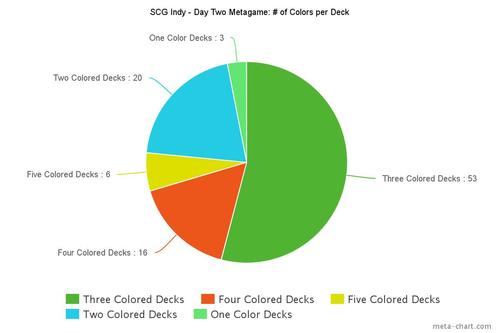
Three-color decks, almost exclusively based around Khans block wedges, are still the most popular. This is to be expected since 60 percent of Standard is made up of Khans block, and many of the most powerful cards from the block are wedge cards (Siege Rhino, Mantis Rider, etc). What's surprising, and further displays the impact of Battle for Zendikar on the format, is the fact that four-color decks are nearly as popular as two-color decks and five-color decks are more played than mono-color decks. This is a major change from Magic Origins Standard where 75% of the top twelve most played decks were three-color or mono-color.
Oddly, as far as mana is concerned, you are almost better off playing four-colors than a three-color wedge. Take, for example, Jeskai Aggro and Jeskai Black. In straight Jeskai, you get one fetchland (Flooded Strand) and one Battle for Zendikar dual (Prairie Stream). After this you are left to fill in your deck with painlands (a huge step down from fetches and slowlands), a tri-land and basics. Jeskai with a black splash, on the other hand, gets three fetchlands (Flooded Strand, Polluted Delta and Bloodstained Mire) and three slowlands (Sunken Hollow, Prairie Stream and Smoldering Marsh). In Battle for Zendikar Standard, a four-color deck will have just as good (and likely better) mana as a two-enemy-color deck or a three-wedge-color deck. As a result, it seems foolish to not take advantage of the flexibility the new manabase has to offer.
Jace, Vryn's Prodigy
While it might seem weird to call a card released in Magic Origins the breakout card of Battle for Zendikar Standard, there is little doubt that Jace, Vryn's Prodigy is the biggest winner of the weekend. There were 16 copies in the top eight and a staggering 87 copies in the top 64. Of the 22 Jace, Vryn's Prodigy decks in the top 64, twenty of them played the full four copies. However, probably the most impressive Jace stat is adjusted dominance (the number of copies of Jace, Vryn's Prodigy played out of the number of decks that could play him - i.e. have blue mana).
There were a total of twenty-eight decks with blue mana in the top 64 of SCG Indianapolis, so if every single one played the full four copies of Jace, Vryn's Prodigy, the maximum number possible would be 112. We ended up with 87 copies of Jace, Vryn's Prodigy in the top 64, which makes Jace's adjusted dominance 78 percent; almost everyone who could possibly cast Jace, Vryn's Prodigy had him in their deck. The blue decks that didn't play Jace, Vryn's Prodigy typically had a very good reason not to play him. For example, Grixis Aggro is basically a mono-red deck splashing blue for Treasure Cruise or Ali Aintrazi's Five-Color Eldrazi list. On the other hand, if you were playing any flavor of Jeskai, Esper Dragons, or three-, four-, or five-color control, you were playing four Jace, Vryn's Prodigy — case closed.
As a result, the little blue planeswalker shot up in price to $75. Let me repeat that, Jace, Vryn's Prodigy is now $75. Remember, this is a mythic that was printed barely two months ago. You can pick up as many Magic Origins boxes as you want and Magic Online redemption is active; it's not like this is some old card with low supply. I hate to be the one to make this comparison, especially after wholly trashing Jace, Vryn's Prodigy in my Magic Origins review, but as far as I can recall, the last time we had a $75 in Standard was Caw-Blade era Jace, the Mind Sculptor. We've had a couple peak in the $50 range (Voice of Resurgance comes to mind), but having a $75 card is stunning.
Maybe even more surprising is that from an EV perspective, there is no reason Jace, Vryn's Prodigy can't stick near his current price. Magic Origins is low-value enough — especially after Hangarback Walker got the event deck treatment — that you can have a $75 or even $100 Jace and the set still won't be worth cracking. Right now at TCG-low prices, the EV of a box of Magic Origins is less than $60. One mythic increasing by $25 or $50 doesn't really have a large impact on the set's EV. At $35, Jace, Vryn's Prodigy was adding $9.80 to the EV of a Magic Origins box, while Hangarback Walker at $20 was adding $11.60. Now at $75, Jace, Vryn's Prodigy is adding $21 to the EV of the box, but Hangarback Walker falling to $10 decreases the box EV by nearly $6. So the overall change is negligible, about $5 more value per box.
Of course Jace, Vryn's Prodigy sticking at $75 depends more on his continued play than EV, but the numbers suggest it is possible. If the upcoming Pro Tour Battle for Zendikar features a Jace-breakdown similar to SCG Indianapolis, it's not out of the realm of possibility that we have a $100, in-print, Standard-legal mythic for the first time in years.
Five-Color Bring to Light

Best exemplifying the power of perfect mana is Five-Color Bring to Light. While Gerry Thompson's build put up the best finish bowing out in the quarterfinals, all three players who made day two with the deck put up great finishes, with Kent Ketter and Joe Lossett finishing 14th and 15th with their takes on the archetype.
Apart from eight copies of Siege Rhino (since you can get them with Bring to Light) and four copies of Jace, Vryn's Prodigy, Five Color Bring to Light is basically a good stuff toolbox deck. Since you can legitimately expect to cast basically any card of any color (and if your mana isn't working out right you can use Bring to Light as a odd mana-fixer), this deck is scary. Not so much because it is broken or too good (although, based on the numbers, it is pretty strong), but because of what it represents.
Apart from shock and disbelief, my initial impression of Standard having a fetchland / slowland manabase was generally positive and one of excitement. I love Legacy and like Modern in part because of the freedom great mana has to offer. Who wouldn't want a Standard with a Modern manabase? After one week of looking over deck lists, my opinion is changing: instead of allowing for greater diversity like we see in other formats, having this good of mana in Standard seems likely to restrict diversity rather than spawn creativity.
In Magic Origins Standard there was a legitimate argument over whether you should play Jeskai or Mardu, even though two of the three colors were the same. Going Jeskai gives you access to more powerful creatures in Jace, Vryn's Prodigy and Mantis Rider, but Mardu has a better suite of removal spells in Crackling Doom and Kolaghan's Command. Now, as Jeskai Black exemplifies, this deck building tension is gone — you can have your cake and eat it too.

While Jeskai splashing black isn't in the end of the world, there is a very real possibility that as the format develops, a huge portion of the metagame becomes four/five color good stuff simply because there is very little reason not to be four/five color good stuff. Great mana works in Modern and Legacy because rather than eliminating choice, diversity and deck building tension, it actually creates an additional layer of all three.
So why doesn't five-color good stuff dominate in eternal formats? Because there is a very good possibility of getting punished by being too greedy with your mana. In Modern, Jund could be five-colors and that would make the deck more powerful; however, if Jund players start getting too greedy, other decks can easily punish them by playing a Blood Moon on turn three. In Legacy, we have not only Blood Moon, but Back to Basics, Price of Progress, and Wasteland as well. If you are building a deck with the expectation of performing well in a tournament, you have to take these cards into consideration. If you get too greedy, you'll never even cast a spell. This punishment, while "unfun," actually adds a very important safety valve to these formats. You can try to have your cake and eat it too in Legacy and Modern, but every so often someone will walk up behind you and smash your face into the cake ruining all of your fun.
Battle for Zendikar Standard has no safety valve. No punishment. We didn't even get a Ghost Quarter in Battle for Zendikar, so there are very few reasons to avoid building the greediest manabase possible. There's no reason not to play 13 fetches, one of each slowland and a few basics. Hell, as Gerry Thompson showed us, you can even throw in some ETB tapped manlands and still be ok.
My fear is because there is no safety valve, Jeskai becomes Jeskai Black, becomes five-color Jeskai (because why not splash Nissa?), Abzan becomes Abzan Blue becomes five-color Abzan (because wouldn't Radiant Flames be nice?). Mardu becomes Mardu Green becomes five-color Mardu (because we have so many fetches, why wouldn't we play Dig Through Time?). Week by week, tournament by tournament, Standard becomes less diverse until we are living in some distopian future where everyone is accidentally playing the same deck without even realizing it. Sure, maybe we call them five-color Abzan, five-color Mardu and five-color Jeskai, but when we look through the decklist on Sunday night we have to strain our eyes to tell the difference between the builds (much like Abzan, Abzan Midrange and Abzan Control).
I love greed and five-color good stuff more than most of you. Good mana is fun and has potential to make a great format, but there needs to be a downside. While it is certainly premature to worry about the future of Battle for Zendikar Standard and the upcoming Pro Tour will tell us much more about the format than SCG Indianapolis, my excitement for the endless possibilities of impeccable mana has cooled. Fingers crossed for Wasteland or Blood Moon in Oath of the Gatewatch.
Gideon, Ally of Zendikar
While undoubtedly overshadowed by Jace, Vryn's Prodigy, Gideon, Ally of Zendikar's debut was actually quite impressive putting eleven copies in the top eight and a massive 90 copies in the top 64 (which is actually more than Jace). More impressively, this wasn't the tepid "I'm not sure he's good but I'll try a copy" kind of play. The decks that played Gideon, Ally of Zendikar were either playing three or four copies, essentially making them Gideon decks. However, the most important thing about Gideon, Ally of Zendikar at SCG Indianapolis is the breadth of decks he showed up in.
When Nissa, Vastwood Seer came out in Magic Origins, she saw a lot of play on week one, but it was pretty much all in one or two decks. Gideon shows up in three different archetypes in the top eight alone spanning the spectrum from being the top end of Abzan Aggro and Jeskai Black, to being a solid mid-game play in Abzan Control. While I'm not sure this will be enough for Gideon, Ally of Zendikar to maintain his current price tag, seeing play in multiple archetypes increases the odds that he finds a long-term home in a least one of them. This might be enough to keep him from falling to Sarkhan Dragonspeaker / Narset Transcendent lows and instead hang somewhere in the mid-teens.
The Big List for Battle for Zendikar
Here are all the Battle for Zendikar cards that saw play at SCG Indianapolis:
- 90 copies of Gideon, Ally of Zendikar is shocking, but it is slightly less impressive when you consider that 53 decks in the top 64 had lands that produced white mana. As such, Gideon, Ally of Zendikar's adjusted dominance only comes in at 42 percent, far less ubiquitous than Jace, Vryn's Prodigy's 78 percent.
- The lands clogging up the top of the rankings is not surprising, but if you dig behind the numbers, the slowlands were not as heavily played as you might expect. In total, there were 212 slowlands in the top 64 at SCG Indianapolis, which amounts to less than one playset per deck (3.625 to be exact). This means the ratio of fetches to slowlands is three or even four to one.
- Ob Nixilis Reignited showed up almost exactly as expected: 14 decks played him averaging 1.5 copies each, exactly in the middle of the "one or two per deck" track record of five-CMC planeswalkers.
- Shambling Vent was the second most played Battle for Zendikar card at #SCGINDY with 25 decks playing an average of 3.16 copies each. Lumbering Falls, on the other hand, is way down on the list, showing up in 6 decks, 1.5 copies per. This is most likely because WBx decks were heavily played and UGx decks were among the least popular, rather than due the cards themselves.
- Fathom Feeder was a huge disappointment. While UBx control wasn't a popular archetype, neither Esper Dragons or Esper Control showed much interest in the two-drop. Only two decks play it (two copies in each deck) and one of these was Joe Lossett's Five-Color Bring to Light build.
- Exert Influence was more heavily played than Drana, Liberator of Malakir. Maybe the problem with Mind Control is that it's an enchantment? Regardless, it's going to be hard for Drana, Liberator of Malakir to hang anywhere near $20 being played as a two-of in less than 10 percent of decks.
- I had higher hopes for the Blighted land cycle, but it looks like instead of building solid three-color manabases that can take advantage of playing several colorless lands, the flavor of week one was using these land slots to splash a fourth or fifth color. If four/five-color builds are the hallmark of Battle for Zendikar Standard, it is less likely that these lands will get the opportunity to leave their mark.
- Scythe Leopard, Hedron Archive and Kiora, Master of Depths win the "not many decks want me, but those that do really want me" award. While the overall number of decks playing these cards is low (eight in all), every single one played these cards as a four-of.
- For being an Eldrazi set, week one of Battle for Zendikar did very little to show off the power of the tribe. Ulamog, the Ceaseless Hunger was the most played with a total of five copies split among two decks. The other Eldrazi were more or less inconsequential to the tournament.
Conclusion
Anyway, that's all for today. What do you make of these numbers? What surprises you? Are there any cards near the top of the "most played" list you expect to plunge over coming weeks? What cards are set to shoot up the rankings? Is the dystopian five-color future a real concern? Is Standard mana too good? As always, leave your thoughts and opinions in the comments, and you can reach me on Twitter (or MTGO) @SaffronOlive.


